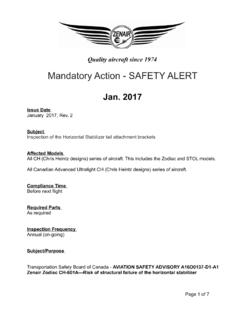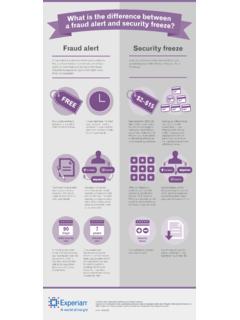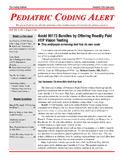Transcription of OECD releases draft changes to be incorporated in …
1 28 July 2017. Global Tax alert OECD releases draft changes to be incorporated in 2017. update to OECD. Model Tax Convention Executive summary EY Global Tax alert Library On 11 July 2017, the Organisation for Economic Co-operation and Development Access both online and pdf versions (OECD) released the draft contents of the 2017 update to the OECD Model Tax of all EY Global Tax Alerts. Convention (the 2017 update). Copy into your web browser: The 2017 update is primarily comprised of changes to the OECD Model Tax Convention (MTC or Convention) and Commentary that have been approved as part of the Base Erosion and Profit Shifting (BEPS) However, it also contains changes resulting from follow-up work on the treaty-related BEPS. measures, including changes resulting from the negotiation of the Multilateral Convention to Implement Tax Treaty Related Measures to Prevent BEPS (the MLI), and changes related to the Commentary on permanent establishments and the international shipping provision, which were under review prior to the BEPS project.
2 changes and additions will also be made to the observations, reservations and positions to the MTC of OECD member countries and non- member economies. These changes and additions are in the process of being formulated and will be included in the final version of the 2017 update. The 2017 update also includes four areas that were not previously released. It does not necessarily reflect the final views of the OECD and its member countries. Interested parties are invited to submit comments on the four new areas by 10 August 2017. After the consultation, the 2017 update will be submitted for the approval of the Committee on Fiscal Affairs (CFA) and of the OECD Council later this year. 2 Global Tax alert Detailed discussion a treaty partner after the conclusion of a tax treaty, optional provisions are included in the Commentary that would deny treaty benefits in certain cases. draft proposals of these Background optional provisions were included in the Action 6 final report, The OECD MTC has been constantly reviewed and updated where the OECD acknowledged that these proposals would to address new tax treaty issues.
3 Working Party No. 1 of the be reviewed in light of similar proposals contained in the OECD's CFA continuously works to update the Convention. draft of the 2016 Model Income Tax Convention released by The last update to the MTC was in the United States (2016 US Model).7. On 11 July 2017, the OECD released the draft contents The provision for special tax regimes and definition of of the 2017 update to the OECD MTC. The contents of the special tax regime in the 2017 update closely follow the 2017 update will be incorporated in a revised version of the provision and definition in the 2016 US Model. Similarly, OECD MTC that will be published in the next few months. the provision for subsequent changes to domestic law in the The 2017 update reflects work carried out by the CFA 2017 update closely follows Article 28 (Subsequent changes since 2011 on a variety of issues. in Law) of the 2016 US Model.
4 The 2017 update also adds new Commentary related to these two optional provisions. Some of the BEPS final reports contain tax treaty recommendations which among other things warrant Article 4 (Resident). changes to the MTC and its accompanying Commentary. The update incorporates all of the treaty-based changes to The 2017 update contains two main changes to Article 4. the OECD MTC as a result of the work on the BEPS project. of the OECD MTC. First, the definition of resident of a The forthcoming 2017 MTC will therefore introduce the Contracting State in paragraph 1 of Article 4 now includes treaty-based recommendations contained in the BEPS recognized pension funds as a result of the follow-on work final reports on Action 2 (Neutralising the Effects of Hybrid under the final report on BEPS Action The Commentary Mismatch Arrangements),3 Action 6 (Preventing the to Article 4 was amended to explain that this article was Granting of Treaty Benefits in Inappropriate Circumstances),4 modified to remove any doubt about the fact that a pension Action 7 (Preventing the Artificial Avoidance of Permanent fund that meets the definition of recognized pension fund Establishment Status),5 and Action 14 (Making Dispute in paragraph 1 of Article 3 constitutes a resident of the Resolution Procedures More Effective).
5 6 Contracting State in which it is established. The effect of this will depend to a large extent on the domestic law and on the While this 2017 update affects both the Articles of the legal characteristics of the pension funds established in each MTC and the Commentary, most of the changes are to Contracting State as well as on the other provisions of the the Commentary. MTC where the definition might be relevant. In light of this first change to Article 4, the definition of the changes to the OECD MTC term recognized pension fund was added in subparagraph (i). Article 1 (Persons Covered) of Article 3 of the MTC. Accordingly, a recognized pension In general, Article 1 provides that the Convention applies to fund of a State means an entity or arrangement established residents of one or both Contracting States. The 2017 update in that State that is treated as a separate person under the revises Article 1 to include two new paragraphs: paragraph 2 taxation laws of that State and: (the transparent entity provision) and paragraph 3 (the (i) that is established and operated exclusively or almost savings clause ).
6 These paragraphs were included in the exclusively to administer or provide retirement benefits Action 2 and Action 6 final reports respectively and are and ancillary or incidental benefits to individuals and that unchanged from those final reports. is regulated as such by that State or one of its political subdivisions or local authorities; or The Commentary to Article 1 also includes optional provisions to deny specific treaty benefits with respect to (ii) that is established and operated exclusively or almost income benefiting from special tax regimes. In addition, in exclusively to invest funds for the benefit of entities or cases of certain subsequent changes to the domestic law of arrangements referred to in subdivision (i).. Global Tax alert 3. Several additions were added to the Commentary on Paragraphs 4 (specific activity exemptions), 5 (depend agent Articles 3 and 4 to the OECD MTC to clarify that a recognized clause) and 6 (independent agent clause) of Article 5 of the pension fund will constitute a resident of a Contracting MTC were revised as a consequence of the BEPS project to State regardless of whether that pension fund benefits restrict the scope of the specific activity exemptions, broaden from a limited or complete exemption from taxation in that the definition of dependent agent and narrow the definition State.
7 Given the considerable diversity in the legal and of independent agent. Further, paragraph containing organizational characteristics of pension funds around the the so-called anti-fragmentation clause and paragraph 8. world, the intent of the changes to the Commentary is to containing the definition of closely related enterprises were provide detailed guidance as to how to interpret the various added to Article 5 also as a result of the BEPS In clauses constituting the definition of a recognized pension parallel to these amendments and additions to Article 5, the fund including: (i) what arrangements can qualify as a Commentary to this article was updated to incorporate the recognized pension fund (including examples in that respect); changes recommended by the final report on Action 7. (ii) when will an entity or arrangement be considered to Moreover, the Commentary to Article 5 contains a number have been constituted and used solely for the purpose of of changes that are intended to clarify the interpretation administering or providing retirement or similar benefits of the term PE and that are the result of two discussion to individuals; and (iii) when will an entity or arrangement drafts released by the OECD in 2011 and 2012.
8 These be considered to be subject to an appropriate regulatory amendments include, for example: framework. The meaning of at the disposal of in paragraph 1 of Second, the tie-breaker rule for determining the treaty Article 5, clarifying that this will depend on the enterprise residence of dual-resident persons other than individuals having the effective power to use that location, as well as changed as a result of the final report on BEPS Action the extent of the presence of the enterprise at that location, The Revised paragraph 3 of Article 4 provides that in cases and the activities that it performs there, providing examples where a person other than an individual is a dual resident, the in that respect. competent authorities of the two countries shall endeavor to An individual home office PE, clarifying that even though determine, by mutual agreement, the country of residence part of the business of an enterprise may be carried on having regard to the place of effective management (PoEM), at an individual's home office, that should not lead to the the place where it was incorporated or otherwise constituted automatic conclusion that that location is at the disposal of and any other relevant factors.
9 In the absence of such that enterprise simply because that location is used by an agreement, paragraph 3 of Article 4 provides that such individual ( , an employee) who works for the enterprise, person will not be entitled to any relief or exemption from and will depend on the facts and circumstances of each tax provided by the treaty except to the extent and in such case, providing examples in that respect. manner as may be agreed upon by the competent authorities. The Commentary on Article 4 further explains that some Whether a farm can be a PE. countries consider it preferable to deal with such cases of The Commentary to Article 5 notes that some of these dual residence using the PoEM as a tie-breaker, which was the changes were intended to clarify the interpretation of this tie-breaker used in previous versions of the MTC. Countries article and, as such, should be taken into account for the having this view are free to include an alternative paragraph 3 purposes of the interpretation and application of tax treaties which uses the PoEM as the tie-breaker in their treaties.
10 Concluded before the 2017 update because they reflect the consensus of the OECD member countries as to the proper Article 5 (Permanent Establishment) interpretation of existing provisions and their application to The 2017 update contains changes to the definition of specific situations. Conversely, changes to the Commentary to Permanent Establishment (PE) in Article 5 and the related Article 5 related to the addition of paragraphs and 8, and Commentary. All of the changes to the definition of PE in the modification of paragraphs 4, 5 and 6 of the Article that Article 5 are the result of the final report on BEPS Action 7, were made as a result of the final report on BEPS Action 7, while the changes to the Commentary to Article 5 are the should be taken into account prospective only and, as such, result of not only the final report on BEPS Action 7, but also do not affect the interpretation of the former provisions of the of work carried by the OECD since 2011.















